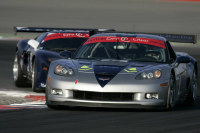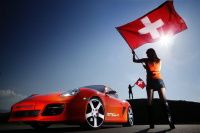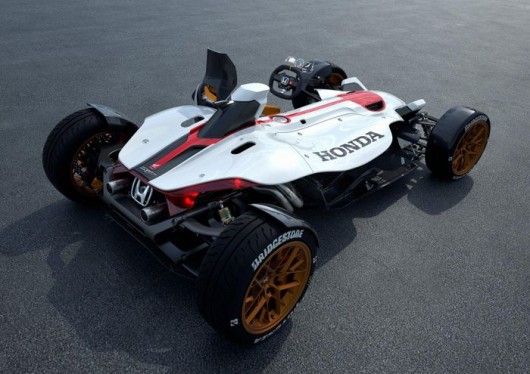LITTLE DRIVING
 We turn to the European experience and carefully look at the movements of the wheel at the local aces at the entrance to the turn. We will see that there is no smoothness at all, but on the contrary, there are sharp, almost convulsive twitches here and there. So how is it right? After all, one of the most important racing tenets says: the smoother the manipulation of the driver’s steering, the higher the speed in the turn? Paradox! We’ll figure out.
We turn to the European experience and carefully look at the movements of the wheel at the local aces at the entrance to the turn. We will see that there is no smoothness at all, but on the contrary, there are sharp, almost convulsive twitches here and there. So how is it right? After all, one of the most important racing tenets says: the smoother the manipulation of the driver’s steering, the higher the speed in the turn? Paradox! We’ll figure out.
SPEED (QUICK) TURNS
For competent passing of fast turns, smooth, if not to say gentle taxiing with “slow hands” is simply necessary. It is important to turn the steering wheel to the lowest possible angle, in order to avoid unnecessary redistribution of weight, it is important to try to keep the machine as balanced as possible. All four tires must hold it tightly. Here is a good example: imagine that you hold a bottle half full of water horizontally. The water is smooth, but it is necessary to tilt the neck down a bit as the liquid rushes in the same direction, making this part of the bottle heavier. Lifted up the neck, everything happens the opposite. In the first case, we emitted braking machines, in the second acceleration. We swing left and right, and the bottle, like a living one, wanted to jump out of her hands and now it will take time for the water to calm down. With the redistribution of the weight of the car something like this happens and in fast corners it should be minimal.
The technique of passing fast turns for the front and rear drive is the same. The main thing is not to disturb the balance, to ensure that the water in the imaginary bottle splashed as little as possible. The speed of the fast turn is raised gradually. Psychologically, it is very important to understand that it is possible to do without inhibition, although the right leg itself is pressing on the brake. As a result of the training, it is possible to overpower myself and start to briefly release the gas at the entrance, but not to slow down. This is what you need! If slight braking is inevitable, the brake pedal must be released very smoothly.
ATTACK DIRECT ANGLE
But the trouble is that there are practically no real high-speed turns on the Russian ring roads! But, insidious ninety-degree – more than enough. Therefore, we will pay special attention to the technology of passing such turns. How to increase the speed of their passage? Usually you can observe such a picture: the racer is greedy with speed and sharply cuts at the entrance. This only spoils the acceleration at the exit of the turn, since the increased entry speed moves the gas addition point. Seeing that he is losing time, the racer at the exit adds more intense gas. On the rear wheel drive car, the rear axle floats away, – forcing the rider to enter into combat with the so-called power oversteer. On the front-wheel drive, the front axle slides unnecessarily (the front tires here are always overloaded with work). Excessive torque on the driving wheels causes understeer and also power. In both cases, at the exit of the turn, the gas has to be dumped, and this is a gross mistake. As a result, the exit speed falls and, as a result, the speed at the end of the straight line suffers. The reason for the error lies in the desire to take such turns, using the technique of passing high-speed turns, and it does not lead to anything good. Yes, and the temperature of the tires goes beyond the optimal limits: they begin to warm up not by working on friction, but because of unnecessary slip, and float away even more, and this is unacceptable. Remember, tires can do as much work as they can.
Sorry for the tautology, but in this case it is appropriate. So how is it right? First: the entry point should be attributed 5-8 meters deeper. The second and most important thing: at the entrance to the turn, it is necessary, as the English-speaking drivers express themselves, to make the car as early as possible “to take a set in a turn”, that is, in free translation, literally “sit in the turn”. And sit on the two outer wheels, as if to rest against them and remain in such a balance right up to the very exit from the turn. To rely on the spot of contact of external tires, to make the tires work, and not to let them slip, – this is the skill of the rider.
For greater clarity, let us recall the favorite technique of experienced kart drivers: in steep turns, they are deflected not inward, but outwardly, which, at first glance, contradicts logic. In fact, the additional loading of external wheels forces the cards to literally stand on two external wheels, which seem to be abutting and completely non-slip. This allows the kart-driver to prescribe the desired trajectory with greater speed and without slipping – literally like on rails.
A competent technique of passing ninety degrees turns allows you to raise the exit speed by an average of 5 km / h, and the speed at the end of the straight line – by 10 km / h, respectively. Here you have the answer, where to look for the “lost” seconds!



